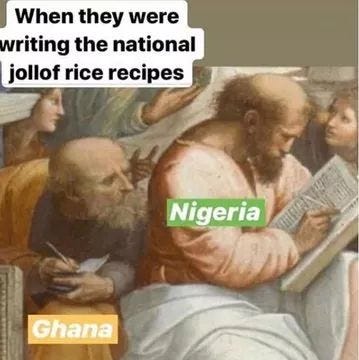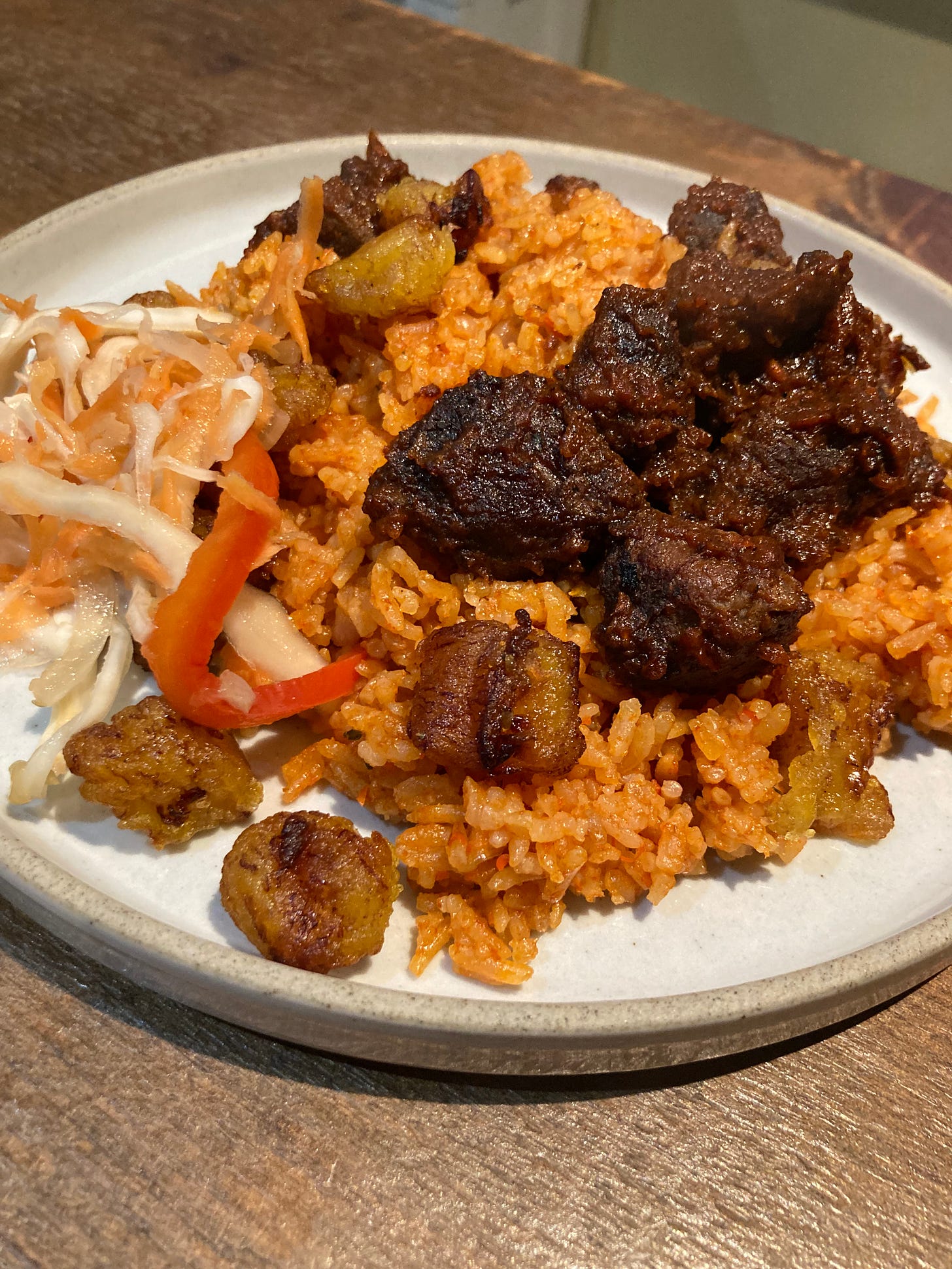Jollof rice, and the pride of getting it right.
Adapted from: the well-loved West African rice dish.
Food as cultural identity is a funny thing. On the one hand, no one wants to be reduced to their country’s most accessible dish (“Oh you’re Chinese? I love dumplings!”)—but on the other, we take extreme pride in our mastery of said recipes nevertheless, as some sort of cultural capital. Maybe this is a specific symptom of the diasporic experience or the guilty immigrant daughter experience—I’m not sure. All I know is, I didn’t leave my parents’ house with much in terms of cooking knowledge, but you best believe I brought my ability to make a dumpling from scratch.
Like dumplings and red-braised pork are for me, making the perfect jollof rice is a strong point of pride for West Africans. It’s a dish that can be traced all the way back to the Jolof/Wolof Empire, a medieval West African state that ruled what is now Senegal and Gambia. Today, jollof rice is one of West Africa’s most well-known and well-loved dishes, with regional variations all along the countries lining the coast. (The Canadian African has written an excellent, in-depth post spelling out the differences between these regions.)
There is so much regional pride for jollof that it’s spurred an ongoing debate as to which West African nation does it best. It’s playfully referred to as the Jollof Wars, with Ghana and Nigeria spearheading the rivalry. “I’m talking Drake vs. Meek Mill epic,” writes Eden Hagos, of Black Foodie. “Twitter rants have ensued, diss tracks have been dropped.”
It’s also, for many, a matter of personal pride. “Learning to make Jollof was a rite of passage for me,” writes food blogger Ozoz Sokoh of Kitchen Butterfly, whose recipe for Classic Nigerian Jollof Rice is one of the ones I referenced. “I've gone through so many iterations, each time trying to streamline the process while delivering the most flavour.” YouTube is also full of cooking videos from different West African cooks, explaining their most fool-proof method for making the best jollof. As someone who primarily makes rice in a rice cooker using the very precise “water to the first knuckle” method, I was nervous. I wanted to get this right.
Recipe notes
Even my friend E., who grew up in Nigeria and sent me this week’s recipe, admits it’s a learning curve. The common mistake, he says, is to add too much liquid, and end up with a goopy jollof porridge. The measurements in the recipe are admittedly loose, but the instructions are vital: stir every 20 minutes, don’t add too much water, and trust that the steam will cook the rice.
Despite all of my anxiety, my first jollof rice turned out decent. A little wet (I used a too-big can of tomatoes and basmati rice; E. recommends using parboiled long-grain next time), but delicious. Next time, I’m aiming for better grain definition.
I served it with fried plantains, leftover pikliz from the Haitian griot as a substitute for the more traditional coleslaw pairing, and Nigerian peppered beef. It was *chef’s kiss*
Until next time!
Tracy







